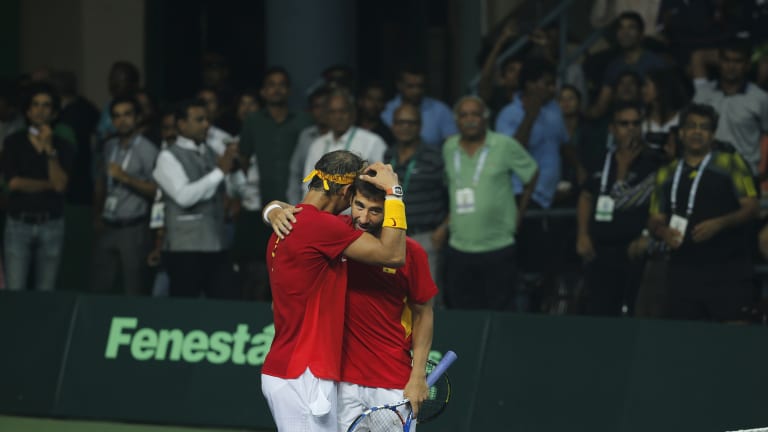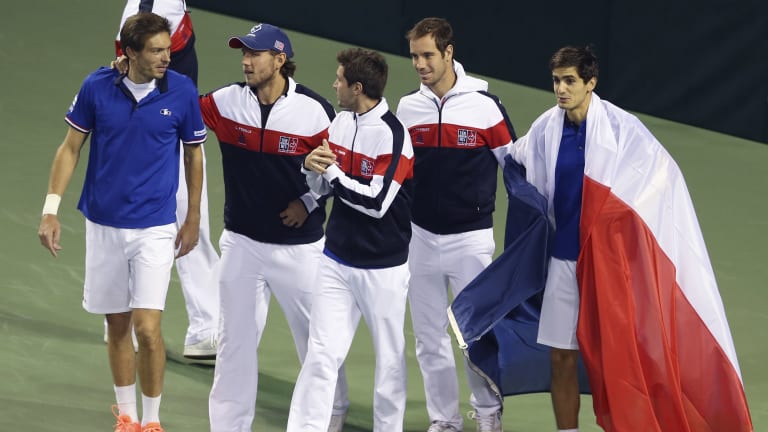What’s the best part of a Davis Cup weekend? For some, it’s the sight of unbridled patriotic pageantry in a sport with such a coolly globalist ethos. For others, it’s the sound of normally reticent fans letting their preferences and passions be heard at full volume. For the doubles devotees among us, it’s the rare chance to see that neglected version of the game get as much attention as the singles.
To me, though, the best part of Davis Cup comes right at the beginning of a tie, in the first few games of the opening rubber. As the two players work their way into the match, there’s a feeling that everyone is settling in for a long weekend together. We all know we’re going to be here for a while. We all know we’re going to watch a small cast of characters act out a lengthy drama on a single court. We all know, as that drama progresses, that we’re going to witness ups and downs and twists and turns that we can’t possibly foresee right now.
Yet even in those opening minutes, there’s also an intensity to the atmosphere in a Davis Cup arena that doesn’t exist anywhere else in tennis. When the home-team’s player wins his first point, or records his first service hold, the fans stand, scream, blow their kazoos, bash their Thunderstix and begin to chant. Normally, this type of response to a single point at the start of a three-out-of-five-set match would be embarrassingly out of proportion to its importance. Not here; over-the-top reactions are what Davis Cup is all about.
Despite those reactions, which the Cup provokes in arenas from Buenos Aires to Moscow to Melbourne, there has been a feeling for decades that the competition isn’t living up to its potential as an entertainment product. To its detractors, the staggered, four-stage schedule is confusing. The fact that the winning nation must begin its title defense three months later is absurd. The terminology, with its ties and rubbers—some alive and some dead—is fusty and arcane. And apparently, as of this week, those ties and rubbers take too long. On Wednesday, the International Tennis Federation, which runs Davis Cup, announced that it will vote in August on a proposal to reduce the length of matches from best of five sets to best of three.
That decision won’t be made lightly; best of five has been the standard since the Cup began 117 years ago. But the move also shouldn’t come as a surprise. The ITF has been looking for ways to attract more top players to Davis Cup, who will hopefully attract more of that mysterious Holy Grail known as the “casual fan.” This brand of fan, it is believed, wants to watch Roger Federer, but doesn’t want to spend 10, 12, 15 hours over a weekend doing it.


